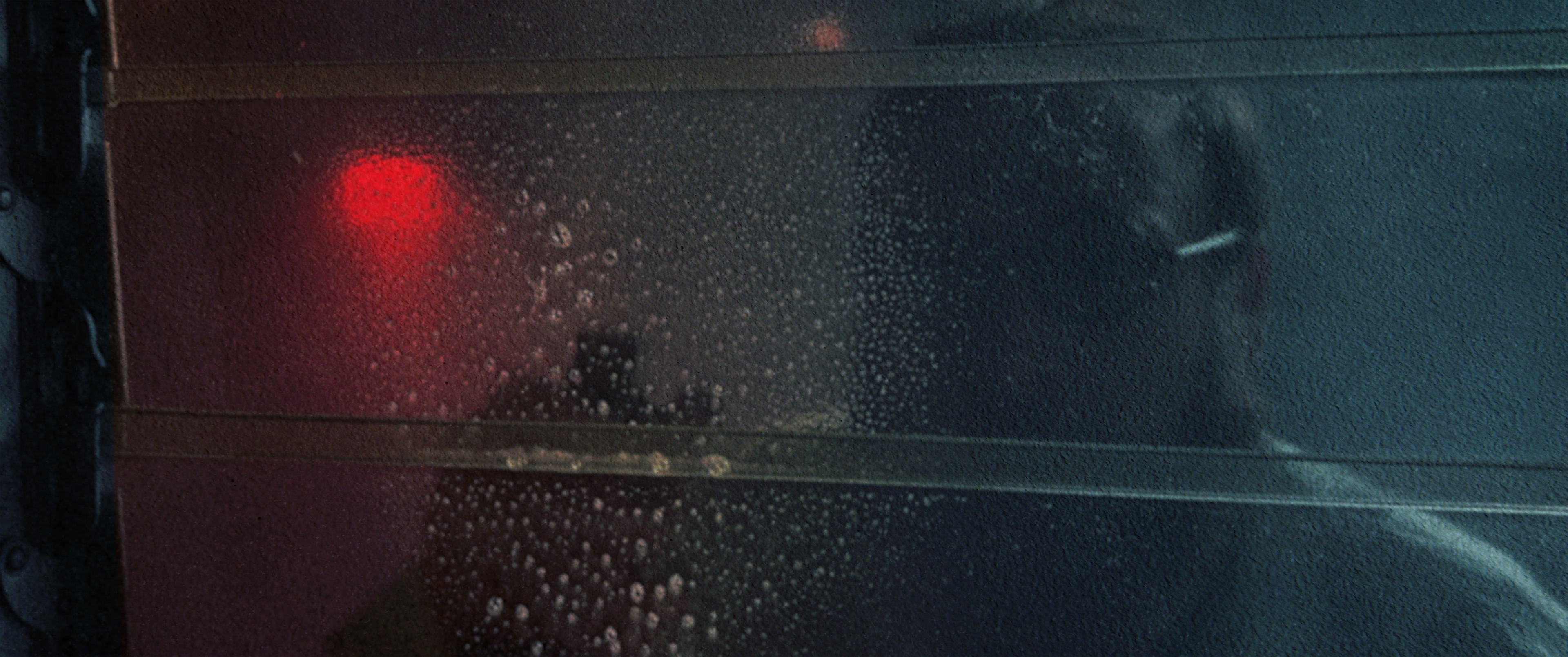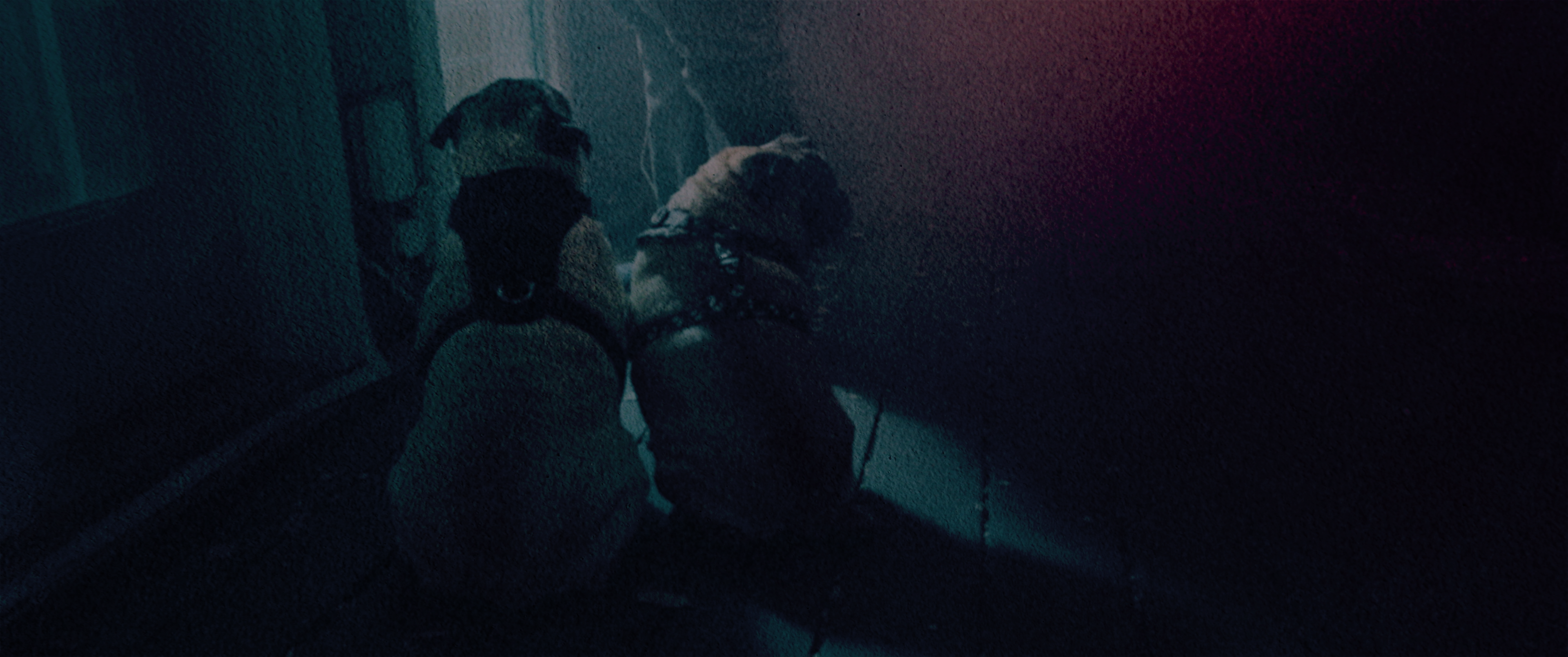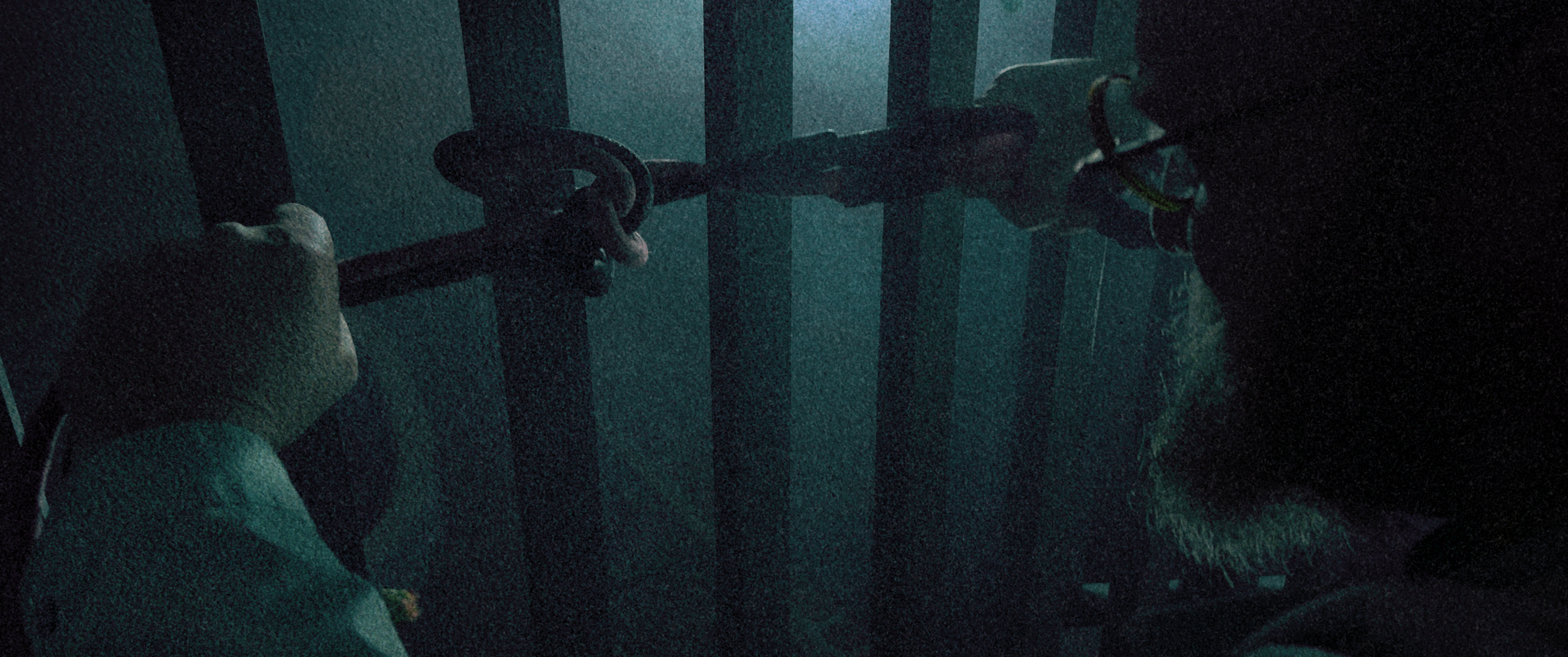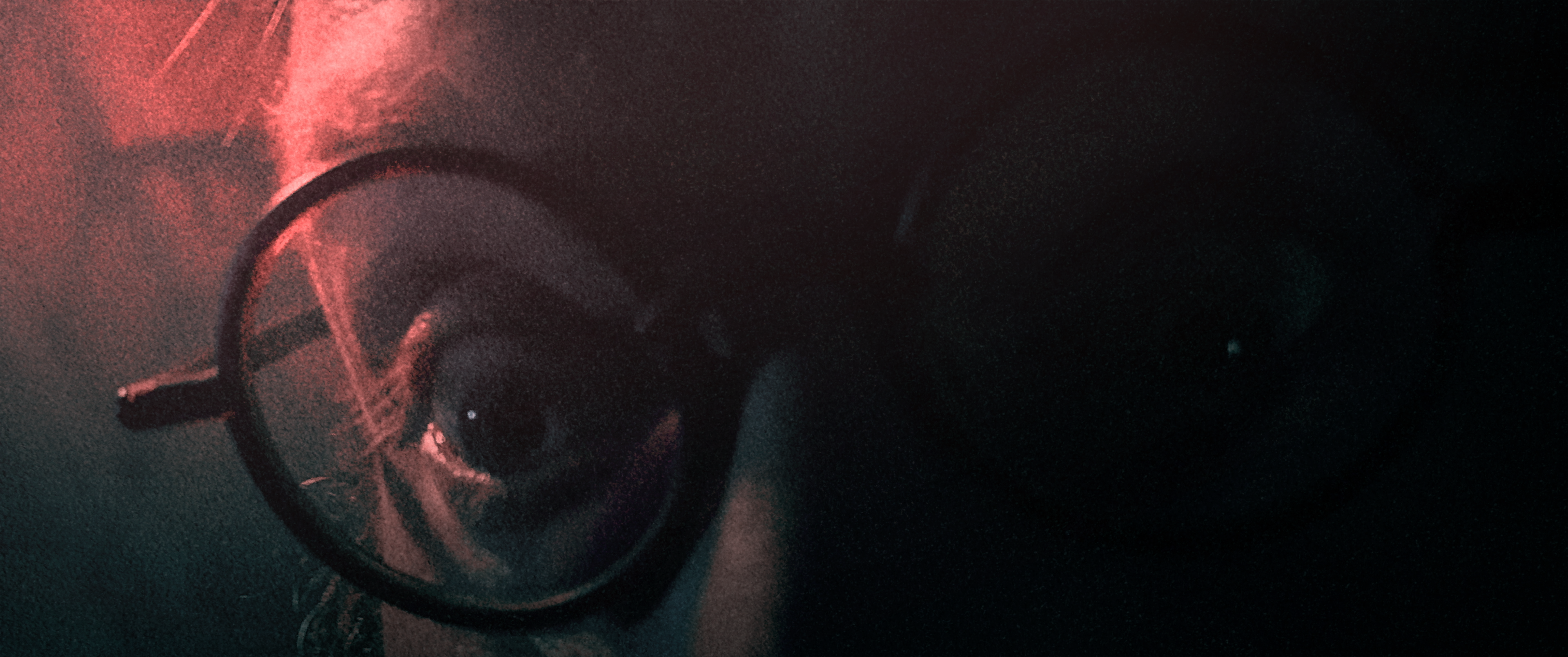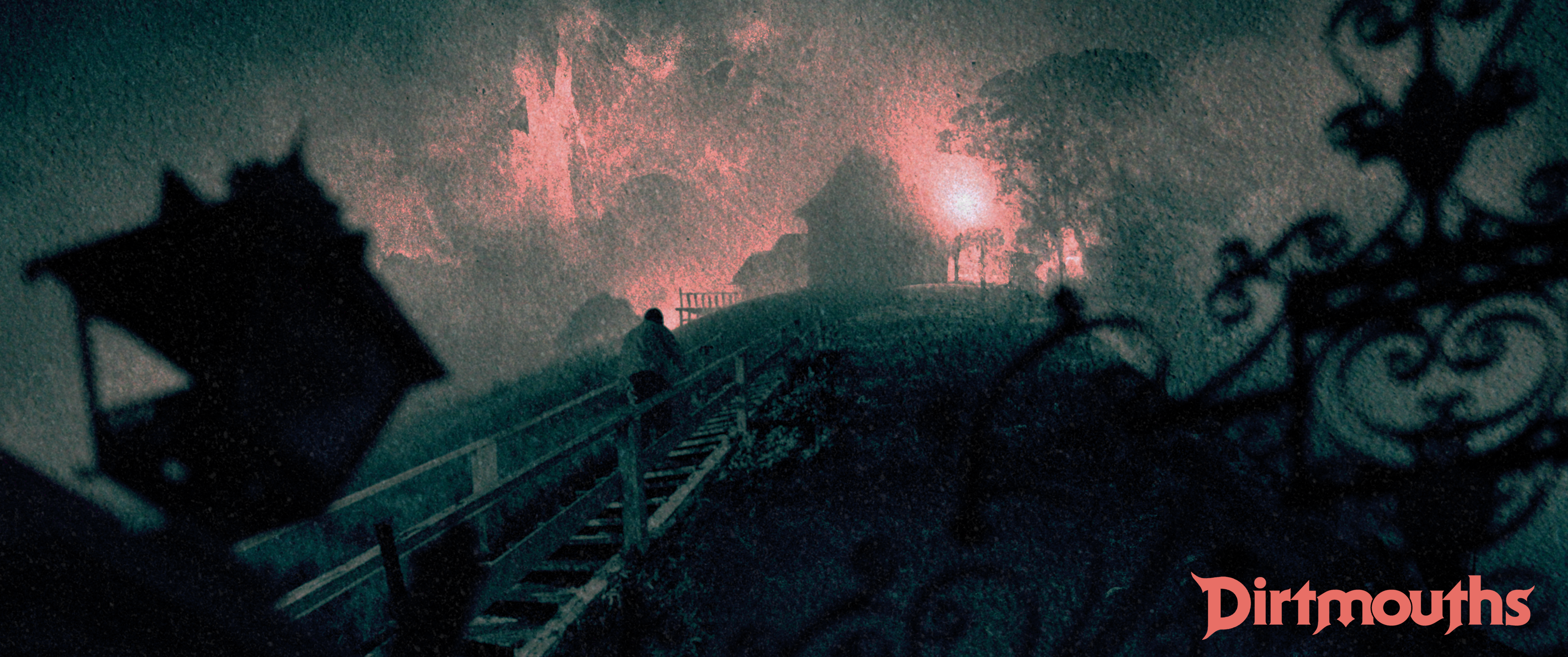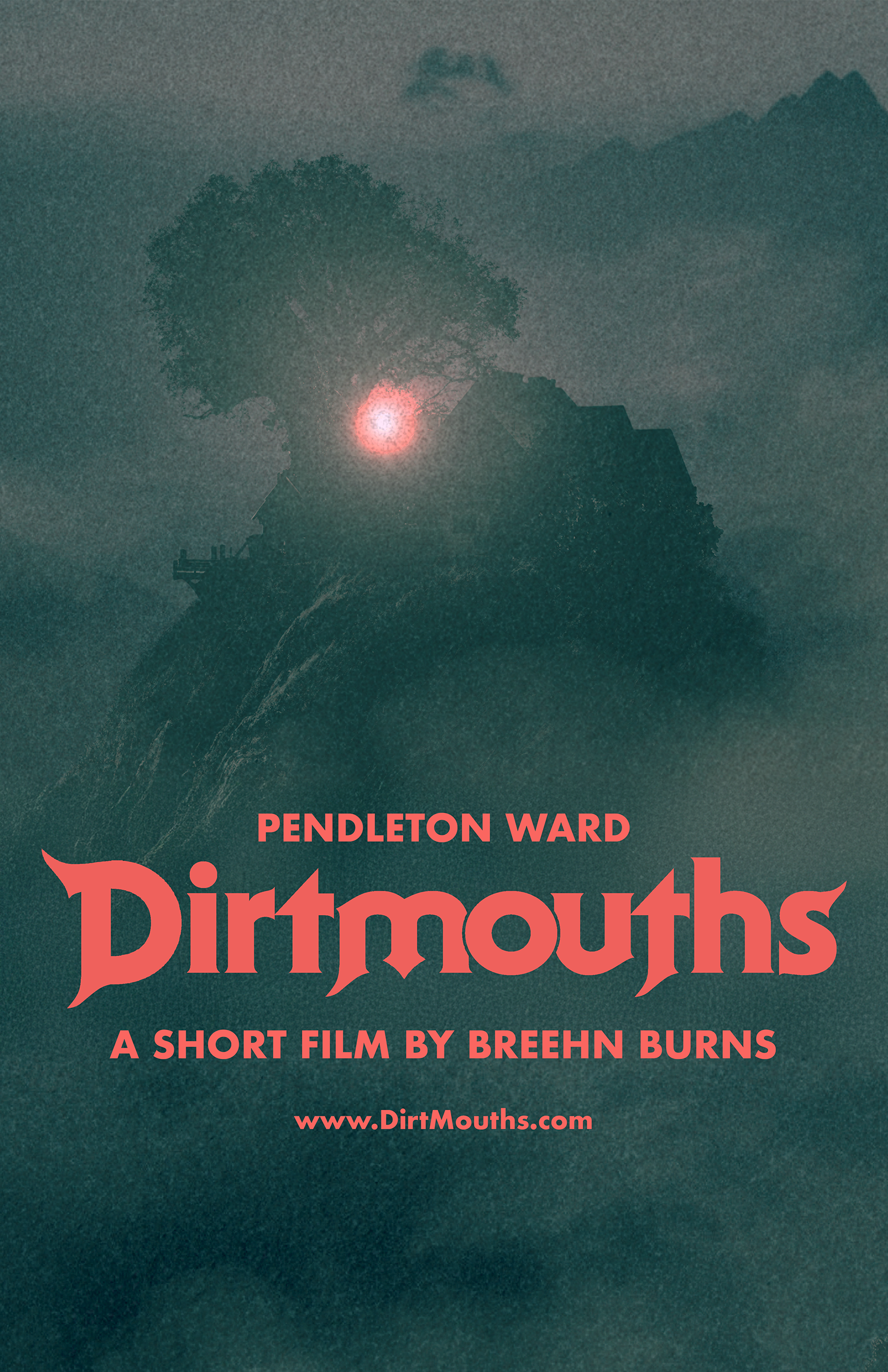On a lonely, fog-drenched hilltop, the night groundskeeper crawls under the house and finds a new, unexpected chore.
DIRTMOUTHS is a short horror comedy directed by Breehn Burns and starring Pendleton Ward in his first live-action role.
A FIVE MINUTE HORROR MOVIE
Writer-Director Breehn Burns designed the villain Sam for the cult horror classic Trick 'r Treat. He was showrunner on Bravest Warriors and supervising producer on Netflix's Invader ZIM: Enter The Florpus. He created Catbug and Dr. Tran.
Actor Pen Ward created the eight-time Emmy Award winning Cartoon Network series Adventure Time as well as Frederator's Bravest Warriors and Netflix's Midnight Gospel.
Our micro-budget horror short was shot on iPhone with three friends over ten winter nights. Inspired by the hand-crafted horror of Evil Dead II and the realist vibe of The Exorcist, DIRTMOUTHS is an improv experiment in making the most of our resources. From night shoots under the house to stop-motion scenes animated in the living room, our choices revolved around keeping the action small enough to be achievable.
EMBRACING SERENDIPITY
I wanted to make a short film so much that DIRTMOUTHS was written on the fly.
My outline took advantage of our resources; the pugs, the raised deck, the nearby hillside staircase. And then each day, Pen and I would sit on the porch and chat over what we wanted to shoot that night. In those talks, and with the help of our talented assistant producer Rory Dise, the short's details were ironed out one day at a time.
The same philosophy carried over into editing, where I created new moments from the footage while trying to avoid reshoots. We really didn't want to go back under the house.
In live action, this "protecting your vision" stuff is so discordant with real life that it almost breaks your brain. Supposedly your goal is to bend reality – second by second – into a fragile illusion that's exactly the way you pictured it in your head.
But I find the more you're able to play and improvise within the spirit of your ideas, the happier the shoot becomes.
"It's a question of preparing the ground in such a way that the lucky accident can happen... so that the piece can take on a life of its own."
– Sidney Lumet
"It's not a matter of how well can you make a movie. It's how well can you make it under the circumstances. Because there's always circumstances."
– George Lucas
AN ANIMATED LOOK
For the limited color palette and art-paper texture of DIRTMOUTHS I was inspired by RISO prints, a Japanese photocopy technique often used for zines.
My first plan was to print out every frame of the film using a Risograph printer, then photograph them one-by-one like an animated film. That turned out to be unrealistic.
So to create the misty, dreamlike hilltop, I --
1. Used heavy fog to add depth and keep the frame alive
2. Scanned art paper and charcoal rubs
3. Animated them to create a textured film grain that would interact with the fog
4. Composited it all together
SOUND
For the voices of the Dirtmouths, I sat in a closed car (good acoustics) and pushed my voice as far as I could. I recorded it on iPhone, then pitched myself up.
For the song, Pen's voice was captured in-camera, on set. We did have a little lav mic we tried using – assuming anything would be better than recording straight into the phone – but our raw audio was pretty damn alright.
Some of the most powerful scenes in movies have no music. I caved and used a little music in DIRTMOUTHS, but I looked at Friedkin's The Exorcist to understand intentional sound design that doesn't rely so much on score.
I also studied the sound of an animated creature feature -- the quiet, 8 minute pilot for Scavengers by Joseph Bennett and Charles Huettner, with very memorable sound design by Mike Jannson.
I remember hearing that M. Night Shyamalan edits his movies without any temp score and tries to get every scene working on its own, and at the time I almost didn't believe it.
The insecurity around using music in film fascinates me. An audience will watch a good movie with no score and never even notice, but they rarely get that chance. I can only think of a handful of movies with (mostly) no music, like Rope, Network, Dog Day Afternoon and No Country For Old Men.
